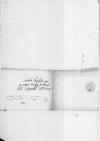Quam mihi fuerint gratae ⌊⌋, Vir Clarissime, non facile persuasero, nempe quibus de tua recta valetudine certior sum factus, quam ego non minoris facio quam meam ipsius. Nulla haec est temeritas ut scribis, nulla confidentia, scis enim, quo animo quamque sincere a prima hora, qua tecum consuetudinem inibam, amaverim te. Adeo, ut quas abs te accepi litteras, tamquam perpetuum tanti viri mnemosinon apud me sum servaturus. Faxint interim superi, ut
cf. Ov. Rem. 390 Maius erit, tantum quo pede coepit, eat.; Ov. Pont. III 4. 87 Quo pede nunc utar, dubia est sententia nobis ⌊quo pede coepisticf. Ov. Rem. 390 Maius erit, tantum quo pede coepit, eat.; Ov. Pont. III 4. 87 Quo pede nunc utar, dubia est sententia nobis ⌋
sive maris, sive terra in tam sepositam ⌊Poloniam⌋ felicibus avibus pervenias. Quod si ad nostros ⌊Belgas⌋ contigerit appellere, cave committas, oro, ut insalutato ⌊parente⌋ illinc te subripias. Nil est, quod ei dici velim, quam quod eam ei precor valetudinem, qua praeditus sum ego. Quod abs me summopere flagitasti, ut dum me praesente tui apud ⌊imperatorem⌋ facta fuerit mentio, ego te illi perpetuo addictum pollicerer, feci hoc mane et libenter eam audivit salutationem. Magister curiae maior, ⌊pater⌋ et filius de la Chaulx, marchio de Ancisa, dominus de Corrir et dominus de Pelon tibi cum multo foenore salutem, quam tuis litteris illis dederas, reddunt ac felicissimam precantur profectionem. Si quid sit, quod in aula ⌊caesareae maiestatis⌋ me tuo nomine efficere iusseris, gratissimum feceris. Ego veri amici officio praesertim in tuo negotio fungar. Quod barbarius scripsi, ignorantiae meae condonabis. Bene vale ac me tibi addictum persuade.

